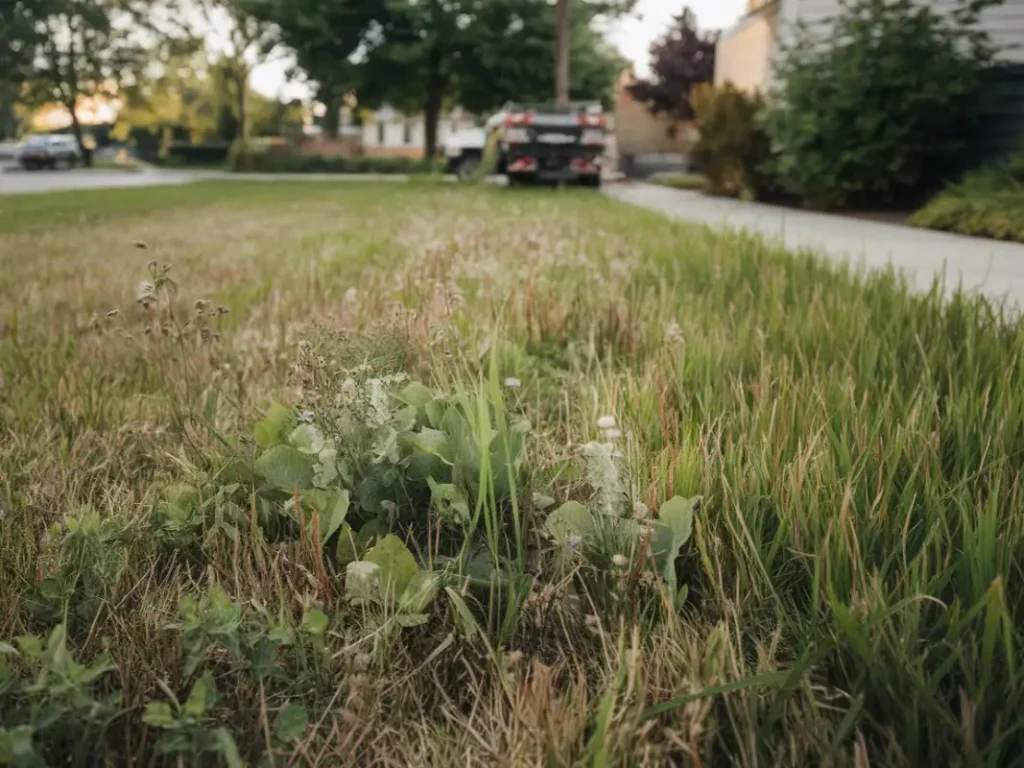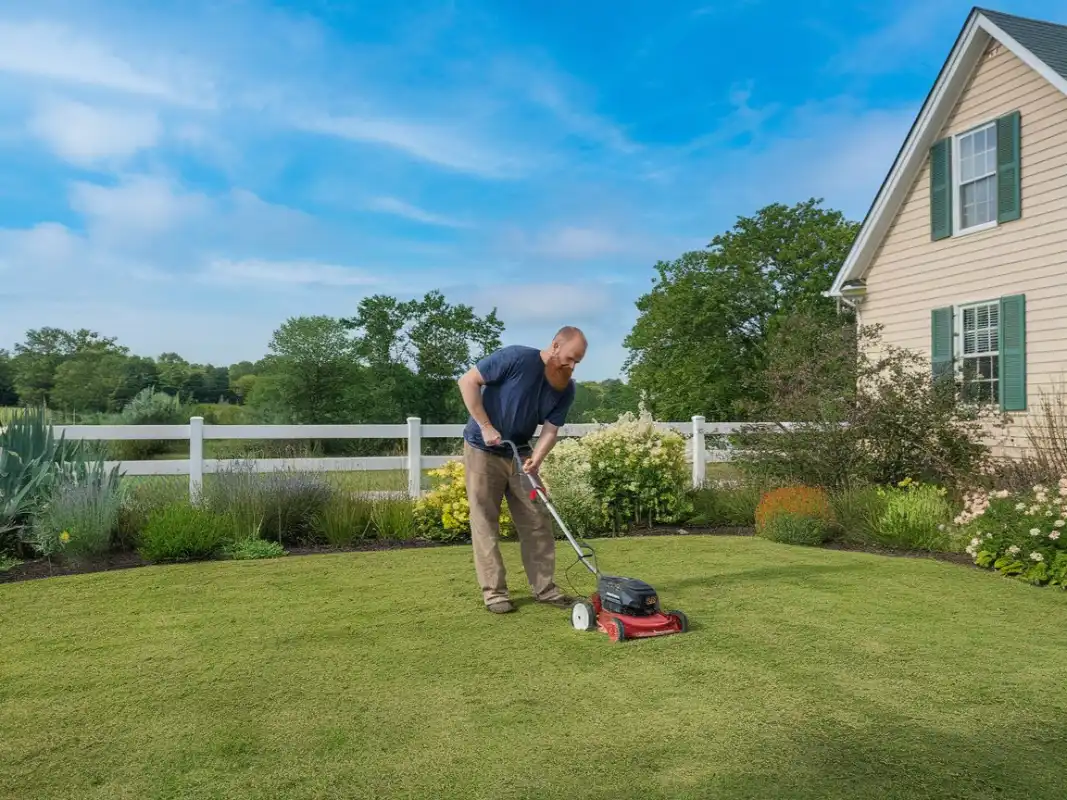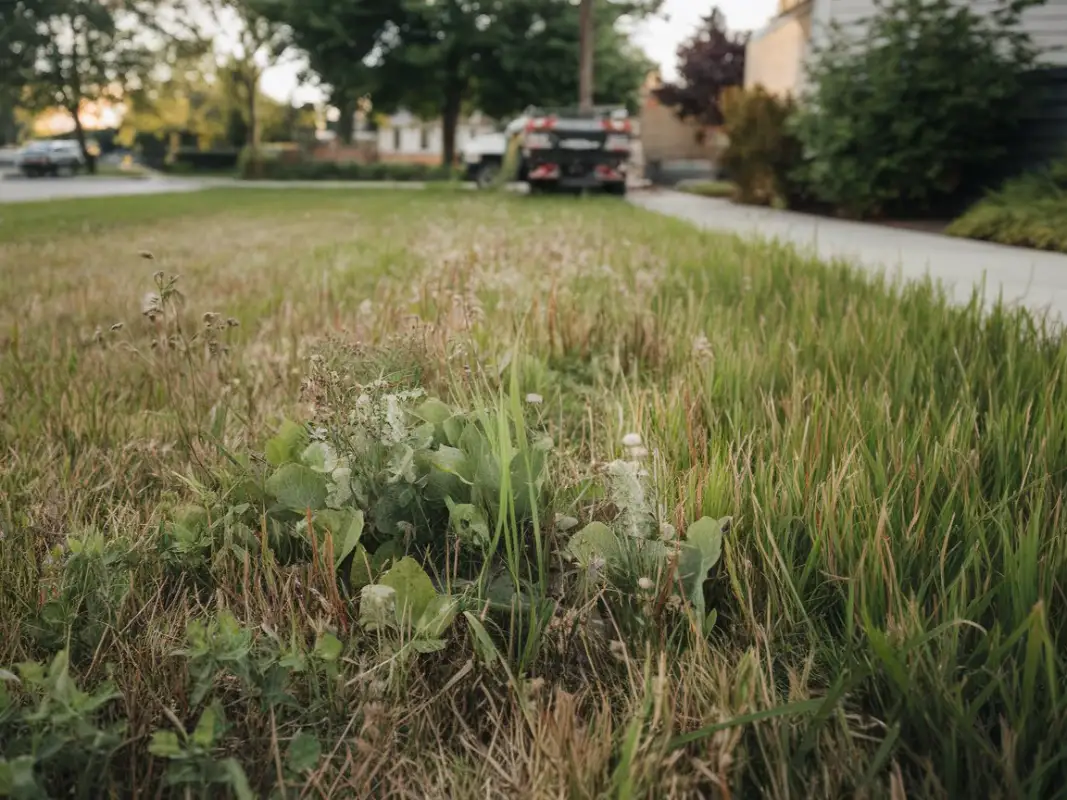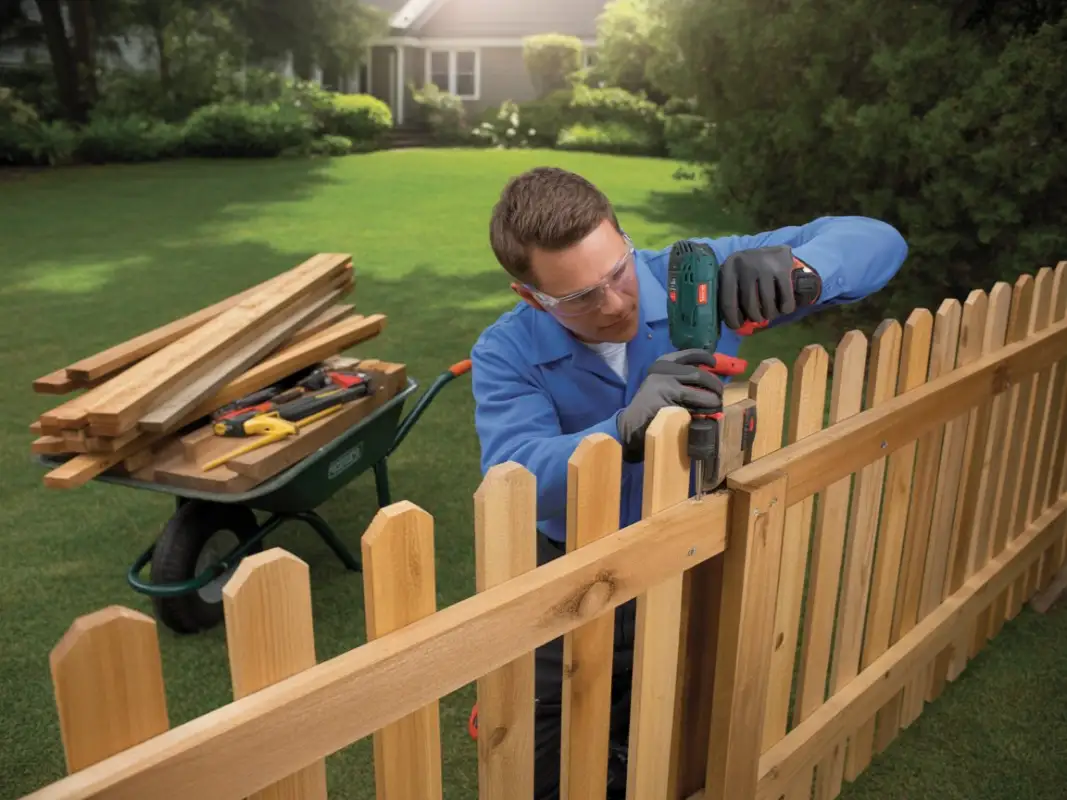If you’ve just overseeded your lawn and now spot tiny weeds sneaking in, don’t panic. You’re not doing anything wrong in fact, you’re experiencing one of the most common post-seeding challenges homeowners face. The secret lies in understanding when and how to control weeds after overseeding.
At Lawn Theory, we help homeowners across Fairfax, Loudoun, Arlington, Alexandria, Prince William, and Falls Church create vibrant, thick lawns that crowd out weeds naturally. Whether you’re fighting dandelions, crabgrass, or clover, mastering the timing of weed control after overseeding makes all the difference between patchy frustration and a lush green carpet.
Let’s walk through exactly what’s happening, and what you can do to win the battle against weeds the right way.
Why Weeds Appear After Overseeding
You aerated, dethatched, raked, and spread quality seed – so where do the weeds come from?
The answer hides right beneath your feet.
When you disturb your soil during overseeding, you awaken dormant weed seeds that have been waiting for the perfect opportunity to sprout. They’ve been lying quietly in your lawn’s topsoil, sometimes for years, waiting for the sun and moisture your seeding process just provided.
Common triggers for post-overseeding weed growth include:
- Exposed soil after aeration or dethatching
- Excess moisture or overwatering
- Using topsoil that contains weed seed
- Warm daytime temperatures after seeding
Don’t be discouraged, weeds after overseeding are normal and temporary. The key is to focus on strengthening your new grass first before introducing any herbicides.
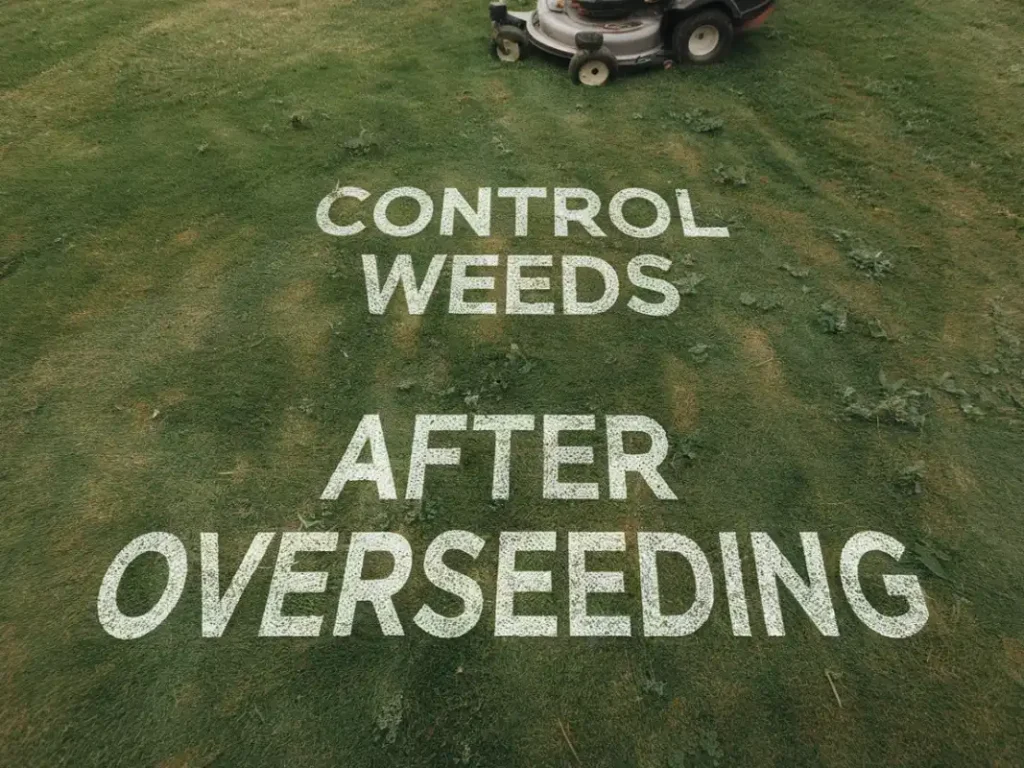
Can You Treat Weeds on Your Lawn After Overseeding?
Here’s the million-dollar question: Can you treat weeds right after overseeding?
The short answer: Not yet.
Applying herbicides too early can damage tender seedlings before they’ve had the chance to develop a solid root system. Most professional lawn care experts, including Lawn Theory’s technicians in Northern Virginia recommend waiting 3–4 weeks after overseeding before applying any weed control treatment.
During those first few weeks, your lawn’s focus should be on germination and growth, not fighting weeds. Let your new grass get mowed twice before thinking about weed control.
Pro Tip: A newly seeded lawn should be mowed at least two times (after seedlings reach about 3 inches) before applying any herbicide. This ensures your young grass can handle mild weed treatments safely.
Also Read: Lawn Care Pre-Emergent Weed Control in Northern Virginia | Lawn Theory
How to Control Weeds After Overseeding – The Smart, Step-by-Step Approach
1. Focus on Grass Growth First
Keep your watering schedule consistent: light and frequent for the first 2–3 weeks, then transition to deeper, less frequent watering as roots establish.
Healthy grass thickens quickly and thick grass is nature’s best weed control.
2. Mow Strategically
Once your new grass reaches about 3 inches, mow it to encourage stronger root development. Always use sharp mower blades and avoid removing more than one-third of the grass height at once.
3. Wait Before You Spray
When in doubt, wait it out. The most common lawn care mistake is applying herbicide too soon after seeding. Most post-emergent weed killers can stunt new grass or prevent seed germination altogether.
4. Apply Selective Herbicides (After 3–4 Weeks)
After that 3–4-week period, apply a selective post-emergent herbicide that targets broadleaf weeds like clover, chickweed, or dandelion without harming grass.
If your weeds are still manageable, spot treatment is safer than full-lawn application.
5. Feed the Lawn (Not the Weeds)
Once weeds are under control, a slow-release fertilizer will help your lawn thicken faster, starving weeds of sunlight and nutrients.
At Lawn Theory, we customize this process for Northern Virginia’s local conditions, balancing pH, moisture, and soil density for lasting weed control and vibrant turf.
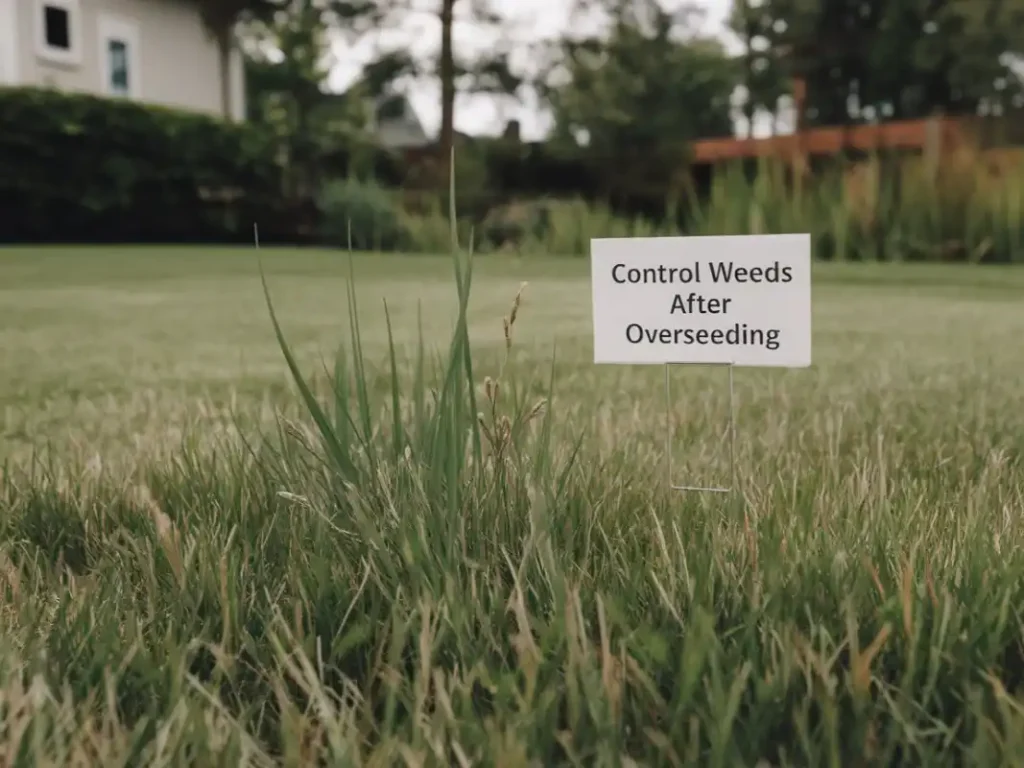
When Is It Safe to Apply Weed Control After Overseeding?
Timing depends on several local factors — soil temperature, rainfall, and seed type.
Here’s a general Northern Virginia guideline:
| Lawn Stage | Week After Seeding | What to Do |
|---|---|---|
| Week 1 | Keep moist; no mowing or chemicals | Focus on germination |
| Week 2 | Continue watering; avoid traffic | Sprouts visible |
| Week 3–4 | Mow twice before treatment | Grass strong enough |
| Week 4+ | Apply selective herbicide if needed | Spot-treat weeds |
For cool-season grasses like tall fescue and Kentucky bluegrass (common across Fairfax and Loudoun), soil temperatures between 50–65°F are ideal for both seeding and delayed weed treatment.
Natural Weed Control Methods After Overseeding
If you’d rather skip chemicals altogether, nature has your back.
Here’s how to build a naturally weed-resistant lawn:
- Mow high: Taller grass shades the soil, keeping weed seeds from germinating.
- Aerate annually: This keeps your soil loose and promotes deep root systems.
- Mulch clippings: They act as a natural fertilizer while blocking light for weeds.
- Fertilize properly: Balanced feeding (especially nitrogen) gives grass an edge.
- Overseed regularly: Each season’s overseeding thickens your lawn further, crowding out invasive weeds naturally.
These methods, paired with seasonal maintenance from Lawn Theory, create a self-defending lawn that needs fewer chemicals over time.
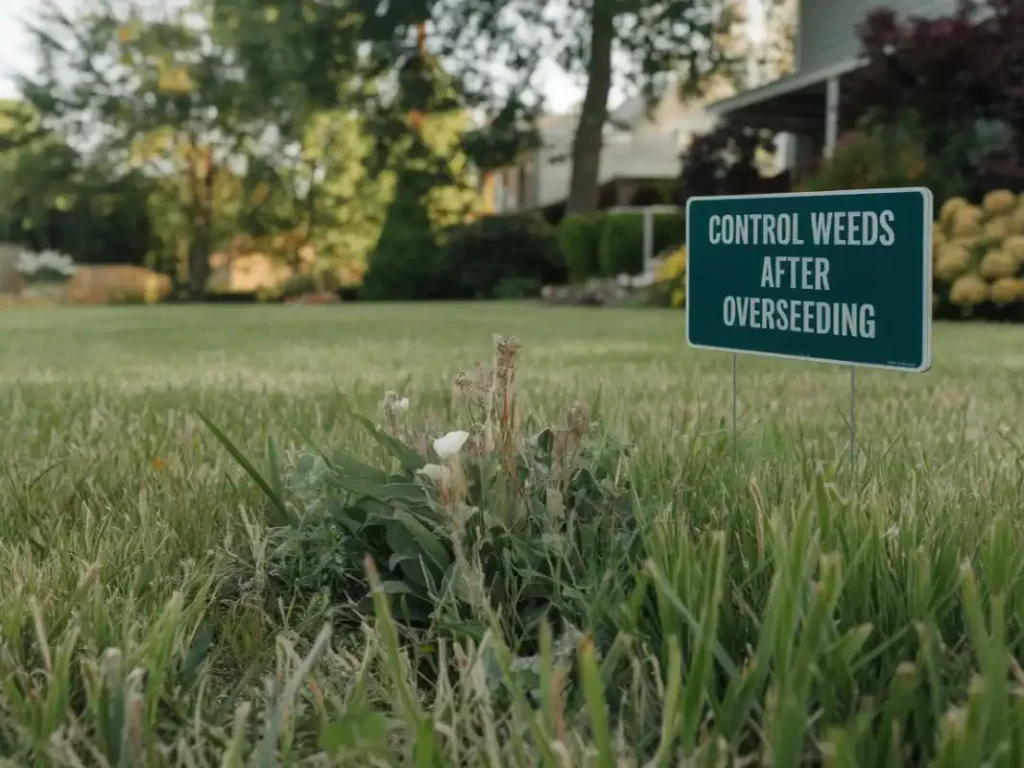
Common Mistakes Homeowners Make After Overseeding
- Spraying too soon: Herbicides can kill new seedlings if applied prematurely.
- Skipping watering: Young roots dry out fast – consistency is key.
- Over-fertilizing: Too much nitrogen burns tender grass blades.
- Ignoring mowing height: Cutting too short stresses new grass and invites weeds.
- Neglecting follow-up seeding: Overseeding every fall builds density and durability.
At Lawn Theory, we guide homeowners through each phase, ensuring your investment in seeding turns into a lush, resilient, weed-free lawn.
Best Products for Post-Overseeding Weed Control (When It’s Time)
When your grass is ready, usually 3–4 weeks after seeding – choose safe, selective herbicides designed for new lawns:
- 2,4-D formulations (targets broadleaf weeds)
- Quinclorac (for crabgrass, dandelion, clover)
- Natural corn gluten meal (acts as an organic pre-emergent for future seasons)
Always check your label for “safe for newly seeded lawns.” When in doubt, our Lawn Theory technicians can apply professional-grade, pet-friendly treatments adjusted for your soil and seed type.
Local Tips for Northern Virginia Lawns
Northern Virginia’s blend of humid summers, cool falls, and clay-based soils makes weed control timing critical.
Here’s what our team at Lawn Theory has learned over years of local experience:
- Fairfax & Loudoun: Soils compact quickly; aerate deeply before overseeding.
- Arlington & Alexandria: Smaller lots benefit from targeted weed spot-treatments.
- Prince William & Falls Church: Fall and early spring are ideal for overseeding cycles.
By tailoring your care plan to your local micro-climate, you’ll enjoy a thicker, greener lawn year-round, without the endless battle against weeds.
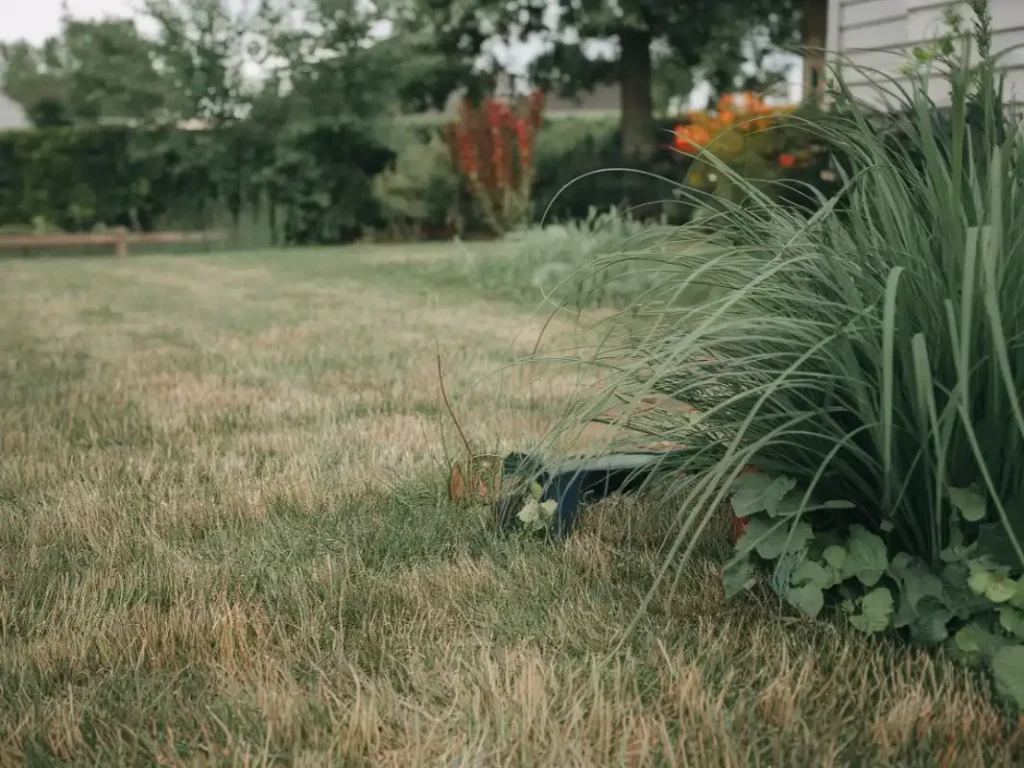
FAQs: How to Control Weeds After Overseeding
1. How long should I wait before applying weed control after overseeding?
Wait 3–4 weeks or until your new grass has been mowed at least twice. Applying weed control too early can damage new seedlings.
2. Can you treat weeds on your lawn after overseeding?
Yes, but timing is critical. Apply weed control only once new grass is strong enough to tolerate mild herbicides.
3. What type of weed control works best for new lawns?
Use selective post-emergent herbicides labeled safe for new turf, or opt for organic pre-emergents in future seasons.
4. Why do weeds still appear after overseeding?
Weed seeds lie dormant in soil for years and germinate when disturbed. Proper watering, mowing, and patience help reduce them naturally.
5. How can I prevent weeds from returning?
Regular overseeding, correct mowing height, and a balanced fertilization schedule will build a thick, resilient lawn that blocks future weeds.
Your Northern Virginia Lawn Deserves Expert Care – Let Lawn Theory Help
Don’t let weeds undo your hard work. With the right timing and a tailored weed control plan, your post-overseeding lawn can become the envy of the neighborhood.
At Lawn Theory, we specialize in lawn fertilization, overseeding, weed control, and exterior care designed specifically for Northern Virginia’s climate and soil. Our veteran-owned team delivers honest, reliable service from soil testing to seasonal treatments ensuring your lawn grows stronger, greener, and thicker every year. See us on Instagram.
Call (703) 650-5655 or request your free on-site estimate today. Serving Fairfax, Loudoun, Arlington, Alexandria, Prince William & Falls Church.

